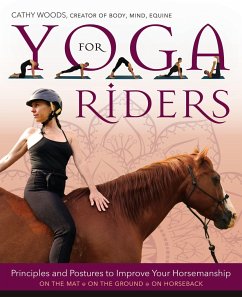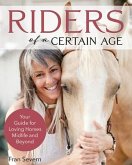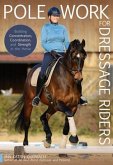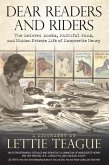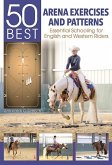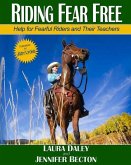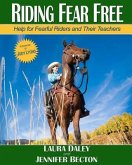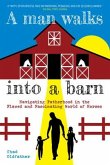- Broschiertes Buch
- Merkliste
- Auf die Merkliste
- Bewerten Bewerten
- Teilen
- Produkt teilen
- Produkterinnerung
- Produkterinnerung
The book to help riders become more aware and conscious in the saddle and on the ground while gently correcting imbalances through the practice of yoga.
Andere Kunden interessierten sich auch für
![Riders of a Certain Age Riders of a Certain Age]() Fran SevernRiders of a Certain Age23,99 €
Fran SevernRiders of a Certain Age23,99 €![Pole Work for Dressage Riders Pole Work for Dressage Riders]() Katrin Ann QuerbachPole Work for Dressage Riders24,99 €
Katrin Ann QuerbachPole Work for Dressage Riders24,99 €![Dear Readers and Riders Dear Readers and Riders]() Lettie TeagueDear Readers and Riders25,99 €
Lettie TeagueDear Readers and Riders25,99 €![50 Best Arena Exercises and Patterns: Essential Schooling for English and Western Riders 50 Best Arena Exercises and Patterns: Essential Schooling for English and Western Riders]() Ann Katrin Querbach50 Best Arena Exercises and Patterns: Essential Schooling for English and Western Riders21,99 €
Ann Katrin Querbach50 Best Arena Exercises and Patterns: Essential Schooling for English and Western Riders21,99 €![Riding Fear Free: Help for Fearful Riders and Their Teachers (Full-color Edition) Riding Fear Free: Help for Fearful Riders and Their Teachers (Full-color Edition)]() Jennifer BectonRiding Fear Free: Help for Fearful Riders and Their Teachers (Full-color Edition)42,99 €
Jennifer BectonRiding Fear Free: Help for Fearful Riders and Their Teachers (Full-color Edition)42,99 €![Riding Fear Free: Help for Fearful Riders and Their Teachers Riding Fear Free: Help for Fearful Riders and Their Teachers]() Laura DaleyRiding Fear Free: Help for Fearful Riders and Their Teachers21,99 €
Laura DaleyRiding Fear Free: Help for Fearful Riders and Their Teachers21,99 €![A Man Walks Into a Barn A Man Walks Into a Barn]() Chad OldfatherA Man Walks Into a Barn22,99 €
Chad OldfatherA Man Walks Into a Barn22,99 €-
-
-
The book to help riders become more aware and conscious in the saddle and on the ground while gently correcting imbalances through the practice of yoga.
Hinweis: Dieser Artikel kann nur an eine deutsche Lieferadresse ausgeliefert werden.
Hinweis: Dieser Artikel kann nur an eine deutsche Lieferadresse ausgeliefert werden.
Produktdetails
- Produktdetails
- Verlag: Trafalgar Square Books
- Seitenzahl: 216
- Erscheinungstermin: 4. August 2020
- Englisch
- Abmessung: 258mm x 208mm x 14mm
- Gewicht: 740g
- ISBN-13: 9781570769719
- ISBN-10: 1570769710
- Artikelnr.: 57581358
- Herstellerkennzeichnung
- Libri GmbH
- Europaallee 1
- 36244 Bad Hersfeld
- gpsr@libri.de
- Verlag: Trafalgar Square Books
- Seitenzahl: 216
- Erscheinungstermin: 4. August 2020
- Englisch
- Abmessung: 258mm x 208mm x 14mm
- Gewicht: 740g
- ISBN-13: 9781570769719
- ISBN-10: 1570769710
- Artikelnr.: 57581358
- Herstellerkennzeichnung
- Libri GmbH
- Europaallee 1
- 36244 Bad Hersfeld
- gpsr@libri.de
Cathy Woods is a long-time yoga teacher and retreat leader, having taught yoga to equestrians and non-equestrians since 1991 at distinguished locations such as Kripalu Center for Yoga and Health, Yogaville Ashram, and Mount Madonna Center. An equine enthusiast and avid rider who loves exploring the natural world from the back of a horse, Woods combined her passions to create a program called "Body, Mind, Equine," which focuses on the use of yoga principles and postures to improve horsemanship, from ground to saddle. She offers retreats and clinics at ranches, resorts, equine centers, and expos-including Equine Affaire, Southern Equine Expo, and Equitana USA-as well as for private equestrian groups. Woods has written for and been featured in numerous online and print publications, such as EQUUS Magazine, Western Horse & Gun Magazine, Yoga Digest, Forbes.com, Equitrekking, and Horsecity.com. Woods aims to impart an aware/mindful approach to yoga and horsemanship in order to make good horsemanship and true yoga accessible to everyone while promoting a more enriched and skillful life. She is based in the Great Smoky Mountains of North Carolina. Find out more at cathywoodsyoga.com.
1. The Yoga/Horsemanship Connection
a. The commonalities of both practices
b. How these complement each other
c. For a richer yoga and equine experience
2. What is True Yoga?
a. What yoga is and isn't
b. Clearing up common misconceptions
c. Yoga means to yoke or unite
d. Beyond postures
e. The other 7 limbs of yoga, meditation, breath-work etc.
f. Important aspects of complete yoga
g. Yoga should be accessible to everyone, regardless of age, life-style or
spiritual belief
4. The Yoga of Everything
a. Brining integrated awareness into all that you do
b. How you do anything is how you do everything
c. Yoga on and off the mat
5. Practical Parallels - From the Mat to the Saddle
a. These apply to any discipline, style or level of horsemanship from
ground to saddle, to arena to event, to show, to trail
b. Applying yogic metaphors to horsemanship
c. Present moment awareness.
d. Body, breath and energy awareness
e. Breathing through challenges
f. Listening to the inner voice
g. Slowing down
h. How these parallels can be used/applied to daily life as well
Note: I could see a chart in this section. Perhaps even a pull out that can
be hung in a barn or yoga space as a quick reference
6. What Makes a Good Rider
a. Attributes/characteristics/qualities - i.e.: awareness, skill, common
sense, courage, good intuition, resourcefulness etc.
b. Becoming an aware and conscious Rider
c. What riding with awareness looks like
d. Balanced in the saddle, weight symmetrical in hands, seat, legs, feet
etc.
e. Using Yogic tools -the parallels and metaphors
7. Intentions
a. Setting and using intentions as a tool for yoga, horsemanship and life
9. Not an "Airy-Fairy" Approach
a. Applying yoga principles to horsemanship is not a "mystical" method
b. The yoga of horsemanship does not mean throwing practical horsemanship
skills out the window
c. This is not a replacement for practicing safety, boundaries, discipline,
training, skill or good ole common sense when working with horses
10. Detecting Energy
a. We have the ability to detect energy and do so all the time, whether
consciously or not
b. Awareness of your own energy, the energy of our equine partners and the
energy around us.
c. Noticing when energy shifts
d. Detecting the ambiance of a situation and adapting accordingly
11. Collection and Groundwork with Ourselves
a. We use collection and groundwork with our horses. It is also beneficial
to do this type of work with ourselves.
b. Working on the mat with our bodies and minds
c. Learning how to become collected energetically. Getting familiar with
what that feels like vs. scattered energy
d. As we become clearer, right thought and right action come spontaneously
e. This helps us to become more skilled human beings
f. Improves our intuition
12. The Spirit of The Horse
a. Equus shows up in almost every mythological writing and folklore
b. Horse medicine/horse totem/the message of the horse
13. Yoga Postures for Riders
a. Good stretches for riders for staying strong, flexible and balanced
(this would include images of yoga poses on a mat)
b. Good stretches in the saddle (this would include images of stretches
that can be done in the saddle)
c. Riding more safely into older age
14. Breath-Work
a. Yogic breathing techniques for use on the mat, in the saddle and
anywhere
b. Instruction on breath-work such as the complete breath, alternate
nostril breathing and similar
c. The direct link between breath and emotions
15. Meditation
a. The value and benefits of meditation
b. Meditation methods/techniques/instruction
16. Embodying the Practice
a. There is no end game; continuing personal growth-a forever practice
b. Understand
c. Committing
d. Internalizing
a. The commonalities of both practices
b. How these complement each other
c. For a richer yoga and equine experience
2. What is True Yoga?
a. What yoga is and isn't
b. Clearing up common misconceptions
c. Yoga means to yoke or unite
d. Beyond postures
e. The other 7 limbs of yoga, meditation, breath-work etc.
f. Important aspects of complete yoga
g. Yoga should be accessible to everyone, regardless of age, life-style or
spiritual belief
4. The Yoga of Everything
a. Brining integrated awareness into all that you do
b. How you do anything is how you do everything
c. Yoga on and off the mat
5. Practical Parallels - From the Mat to the Saddle
a. These apply to any discipline, style or level of horsemanship from
ground to saddle, to arena to event, to show, to trail
b. Applying yogic metaphors to horsemanship
c. Present moment awareness.
d. Body, breath and energy awareness
e. Breathing through challenges
f. Listening to the inner voice
g. Slowing down
h. How these parallels can be used/applied to daily life as well
Note: I could see a chart in this section. Perhaps even a pull out that can
be hung in a barn or yoga space as a quick reference
6. What Makes a Good Rider
a. Attributes/characteristics/qualities - i.e.: awareness, skill, common
sense, courage, good intuition, resourcefulness etc.
b. Becoming an aware and conscious Rider
c. What riding with awareness looks like
d. Balanced in the saddle, weight symmetrical in hands, seat, legs, feet
etc.
e. Using Yogic tools -the parallels and metaphors
7. Intentions
a. Setting and using intentions as a tool for yoga, horsemanship and life
9. Not an "Airy-Fairy" Approach
a. Applying yoga principles to horsemanship is not a "mystical" method
b. The yoga of horsemanship does not mean throwing practical horsemanship
skills out the window
c. This is not a replacement for practicing safety, boundaries, discipline,
training, skill or good ole common sense when working with horses
10. Detecting Energy
a. We have the ability to detect energy and do so all the time, whether
consciously or not
b. Awareness of your own energy, the energy of our equine partners and the
energy around us.
c. Noticing when energy shifts
d. Detecting the ambiance of a situation and adapting accordingly
11. Collection and Groundwork with Ourselves
a. We use collection and groundwork with our horses. It is also beneficial
to do this type of work with ourselves.
b. Working on the mat with our bodies and minds
c. Learning how to become collected energetically. Getting familiar with
what that feels like vs. scattered energy
d. As we become clearer, right thought and right action come spontaneously
e. This helps us to become more skilled human beings
f. Improves our intuition
12. The Spirit of The Horse
a. Equus shows up in almost every mythological writing and folklore
b. Horse medicine/horse totem/the message of the horse
13. Yoga Postures for Riders
a. Good stretches for riders for staying strong, flexible and balanced
(this would include images of yoga poses on a mat)
b. Good stretches in the saddle (this would include images of stretches
that can be done in the saddle)
c. Riding more safely into older age
14. Breath-Work
a. Yogic breathing techniques for use on the mat, in the saddle and
anywhere
b. Instruction on breath-work such as the complete breath, alternate
nostril breathing and similar
c. The direct link between breath and emotions
15. Meditation
a. The value and benefits of meditation
b. Meditation methods/techniques/instruction
16. Embodying the Practice
a. There is no end game; continuing personal growth-a forever practice
b. Understand
c. Committing
d. Internalizing
1. The Yoga/Horsemanship Connection
a. The commonalities of both practices
b. How these complement each other
c. For a richer yoga and equine experience
2. What is True Yoga?
a. What yoga is and isn't
b. Clearing up common misconceptions
c. Yoga means to yoke or unite
d. Beyond postures
e. The other 7 limbs of yoga, meditation, breath-work etc.
f. Important aspects of complete yoga
g. Yoga should be accessible to everyone, regardless of age, life-style or
spiritual belief
4. The Yoga of Everything
a. Brining integrated awareness into all that you do
b. How you do anything is how you do everything
c. Yoga on and off the mat
5. Practical Parallels - From the Mat to the Saddle
a. These apply to any discipline, style or level of horsemanship from
ground to saddle, to arena to event, to show, to trail
b. Applying yogic metaphors to horsemanship
c. Present moment awareness.
d. Body, breath and energy awareness
e. Breathing through challenges
f. Listening to the inner voice
g. Slowing down
h. How these parallels can be used/applied to daily life as well
Note: I could see a chart in this section. Perhaps even a pull out that can
be hung in a barn or yoga space as a quick reference
6. What Makes a Good Rider
a. Attributes/characteristics/qualities - i.e.: awareness, skill, common
sense, courage, good intuition, resourcefulness etc.
b. Becoming an aware and conscious Rider
c. What riding with awareness looks like
d. Balanced in the saddle, weight symmetrical in hands, seat, legs, feet
etc.
e. Using Yogic tools -the parallels and metaphors
7. Intentions
a. Setting and using intentions as a tool for yoga, horsemanship and life
9. Not an "Airy-Fairy" Approach
a. Applying yoga principles to horsemanship is not a "mystical" method
b. The yoga of horsemanship does not mean throwing practical horsemanship
skills out the window
c. This is not a replacement for practicing safety, boundaries, discipline,
training, skill or good ole common sense when working with horses
10. Detecting Energy
a. We have the ability to detect energy and do so all the time, whether
consciously or not
b. Awareness of your own energy, the energy of our equine partners and the
energy around us.
c. Noticing when energy shifts
d. Detecting the ambiance of a situation and adapting accordingly
11. Collection and Groundwork with Ourselves
a. We use collection and groundwork with our horses. It is also beneficial
to do this type of work with ourselves.
b. Working on the mat with our bodies and minds
c. Learning how to become collected energetically. Getting familiar with
what that feels like vs. scattered energy
d. As we become clearer, right thought and right action come spontaneously
e. This helps us to become more skilled human beings
f. Improves our intuition
12. The Spirit of The Horse
a. Equus shows up in almost every mythological writing and folklore
b. Horse medicine/horse totem/the message of the horse
13. Yoga Postures for Riders
a. Good stretches for riders for staying strong, flexible and balanced
(this would include images of yoga poses on a mat)
b. Good stretches in the saddle (this would include images of stretches
that can be done in the saddle)
c. Riding more safely into older age
14. Breath-Work
a. Yogic breathing techniques for use on the mat, in the saddle and
anywhere
b. Instruction on breath-work such as the complete breath, alternate
nostril breathing and similar
c. The direct link between breath and emotions
15. Meditation
a. The value and benefits of meditation
b. Meditation methods/techniques/instruction
16. Embodying the Practice
a. There is no end game; continuing personal growth-a forever practice
b. Understand
c. Committing
d. Internalizing
a. The commonalities of both practices
b. How these complement each other
c. For a richer yoga and equine experience
2. What is True Yoga?
a. What yoga is and isn't
b. Clearing up common misconceptions
c. Yoga means to yoke or unite
d. Beyond postures
e. The other 7 limbs of yoga, meditation, breath-work etc.
f. Important aspects of complete yoga
g. Yoga should be accessible to everyone, regardless of age, life-style or
spiritual belief
4. The Yoga of Everything
a. Brining integrated awareness into all that you do
b. How you do anything is how you do everything
c. Yoga on and off the mat
5. Practical Parallels - From the Mat to the Saddle
a. These apply to any discipline, style or level of horsemanship from
ground to saddle, to arena to event, to show, to trail
b. Applying yogic metaphors to horsemanship
c. Present moment awareness.
d. Body, breath and energy awareness
e. Breathing through challenges
f. Listening to the inner voice
g. Slowing down
h. How these parallels can be used/applied to daily life as well
Note: I could see a chart in this section. Perhaps even a pull out that can
be hung in a barn or yoga space as a quick reference
6. What Makes a Good Rider
a. Attributes/characteristics/qualities - i.e.: awareness, skill, common
sense, courage, good intuition, resourcefulness etc.
b. Becoming an aware and conscious Rider
c. What riding with awareness looks like
d. Balanced in the saddle, weight symmetrical in hands, seat, legs, feet
etc.
e. Using Yogic tools -the parallels and metaphors
7. Intentions
a. Setting and using intentions as a tool for yoga, horsemanship and life
9. Not an "Airy-Fairy" Approach
a. Applying yoga principles to horsemanship is not a "mystical" method
b. The yoga of horsemanship does not mean throwing practical horsemanship
skills out the window
c. This is not a replacement for practicing safety, boundaries, discipline,
training, skill or good ole common sense when working with horses
10. Detecting Energy
a. We have the ability to detect energy and do so all the time, whether
consciously or not
b. Awareness of your own energy, the energy of our equine partners and the
energy around us.
c. Noticing when energy shifts
d. Detecting the ambiance of a situation and adapting accordingly
11. Collection and Groundwork with Ourselves
a. We use collection and groundwork with our horses. It is also beneficial
to do this type of work with ourselves.
b. Working on the mat with our bodies and minds
c. Learning how to become collected energetically. Getting familiar with
what that feels like vs. scattered energy
d. As we become clearer, right thought and right action come spontaneously
e. This helps us to become more skilled human beings
f. Improves our intuition
12. The Spirit of The Horse
a. Equus shows up in almost every mythological writing and folklore
b. Horse medicine/horse totem/the message of the horse
13. Yoga Postures for Riders
a. Good stretches for riders for staying strong, flexible and balanced
(this would include images of yoga poses on a mat)
b. Good stretches in the saddle (this would include images of stretches
that can be done in the saddle)
c. Riding more safely into older age
14. Breath-Work
a. Yogic breathing techniques for use on the mat, in the saddle and
anywhere
b. Instruction on breath-work such as the complete breath, alternate
nostril breathing and similar
c. The direct link between breath and emotions
15. Meditation
a. The value and benefits of meditation
b. Meditation methods/techniques/instruction
16. Embodying the Practice
a. There is no end game; continuing personal growth-a forever practice
b. Understand
c. Committing
d. Internalizing

